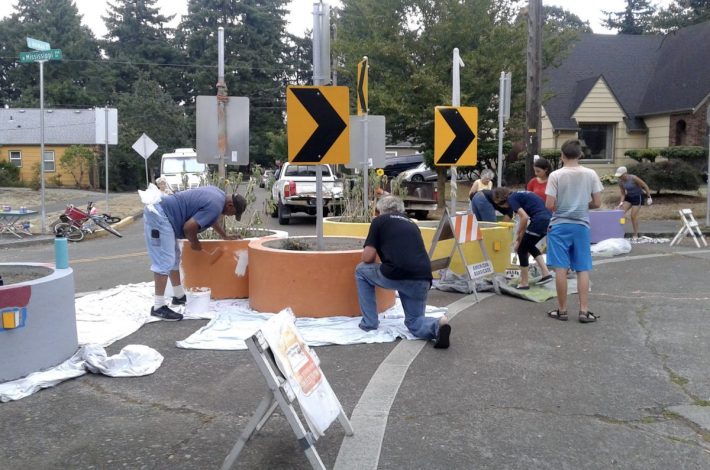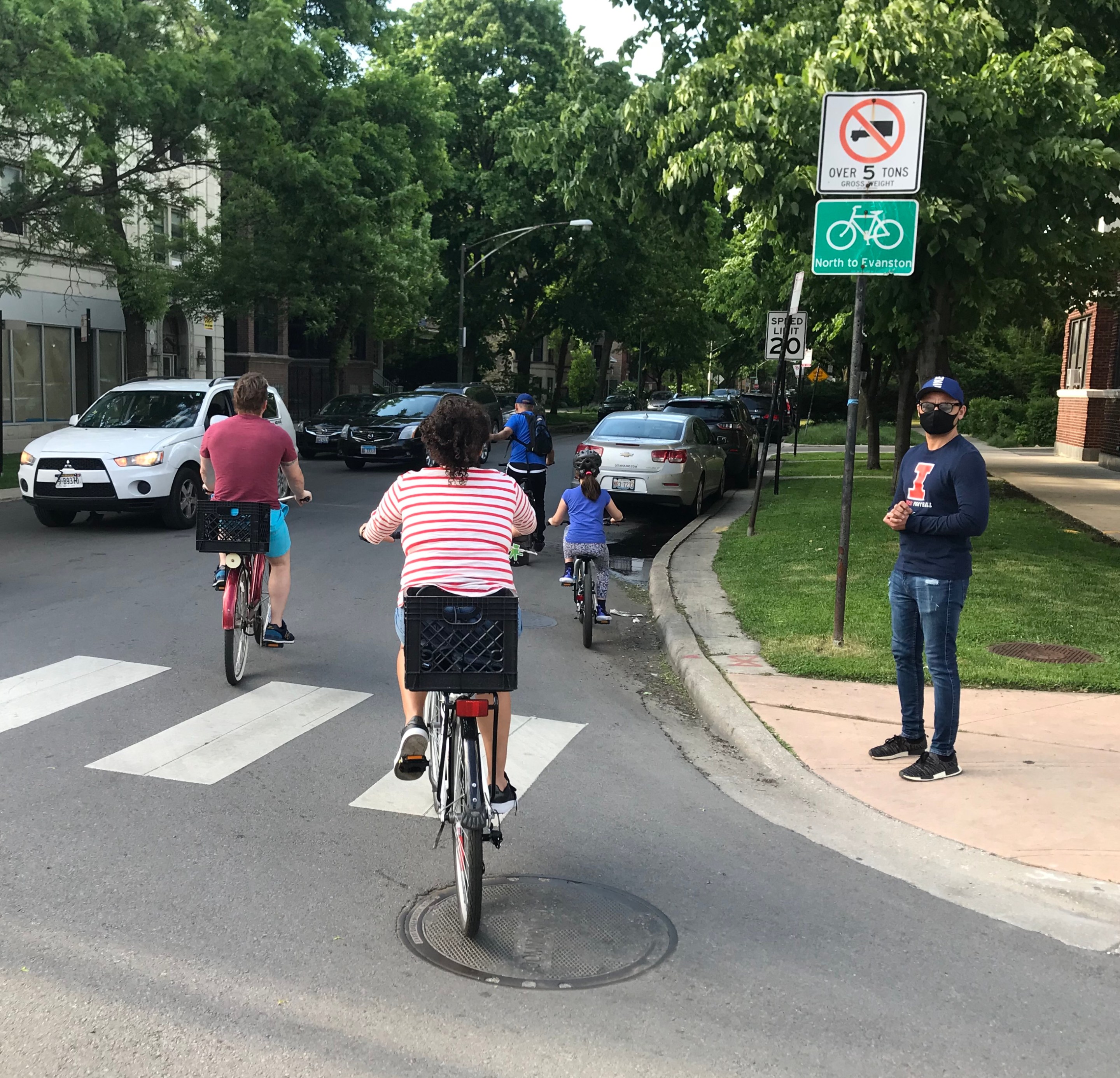The need for universal traffic calming has been on my mind the past few months. I live close to a street that sees a lot of bike traffic in spite of zero traffic calming. It’s not uncommon for drivers to go Chicago's default speed limit of 30mph or higher and a few seconds later see someone biking with or against car traffic. There are three small parks along the street as well and I’m constantly thinking about the need for raised crosswalks at the parks' entrances. I’ve written to my alder about the need for speed humps and was provided with a form for my neighbors to sign in support of speed humps. But even if there was proven support from the community, speed hump installation would not be a guaranteed. I recently learned that minor street changes like stop sign placement, disabled parking spaces, and residential parking zones have to be approved by Chicago's Committee on Pedestrian and Traffic Safety, followed by the full City Council. This process is highly inefficient and inequitable.
Instead of requiring an endorsement of traffic calming from a critical mass of neighbors, or waiting until a certain number of people have been seriously injured or killed in crashes to make safety upgrades, we need low speeds on all residential roads. Currently it’s not uncommon to encounter speed humps on one residential street or block, but not on the next one over. Requiring approval of traffic calming from local residents creates a system of winners and losers.
Children and people who ride bikes are among the biggest “losers” under the status quo. It’s doubtful most aldermen or the Chicago Department of Transportation would take the signatures of children seriously. And since Council members and CDOT have historically given more weight to the desires and opinions of drivers, our roadways continue to favor automobiles over more sustainable forms of transportation.
It’s time we put safety, calm, and sustainability before convenience by ensuring low speeds and low car volumes on every residential road. We need a mayor with vision and guts that will empower and fund CDOT to diversify their traffic calming toolkit and create Slow Streets across the city. Every residential street should be a “shared street,” one that’s designed to slow drivers down and allow people to walk and bike in peace.
Traffic diverters (infrastructure that makes it impossible for drivers to use side streets as cut-through routes) and chicanes (features that force motorists to slalom a bit, slowing them down) have been on my mind a lot lately and currently they’re rare in Chicago. I’d love to see these become more commonplace.

My neighborhood greenway, the Glenwood Greenway, has a narrow segment for about half a mile between Pratt and Devon Avenue. A handful of neighbors and myself have called for traffic diverters here so that drivers stop using Glenwood as a through route and instead stick to Clark Street and Ashland Avenue, the parallel arterials.
My hope is that CDOT’s strategic planning process recognizes the inherent knowledge and expertise residents have on their streets. Some residents along Glenwood Avenue between Devon and Pratt have voiced support for less through traffic and have been told a traffic study is needed in order to assess whether Glenwood can receive diverters or be made one-way.
While I recognize the usefulness of traffic studies, I’m not sure if subjecting residents to a lengthy wait for a traffic study is equitable or useful. Residents and users of the street know it better than engineers who parachute in once every few years. Residents and vulnerable road users deserve a responsive and empowered transportation agency that can prevent traffic crashes and needless conflicts between vulnerable road users and drivers.
City and state funding should be used to create a rapid response team to investigate sites of serious and fatal crashes and recommend safety upgrades that can be quickly implemented. These teams should be responsive to residents' ideas on how to improve a street, provided they reduce the risk of a crash and conflicts between road users. I'm thinking of the residents in Logan Square who have been demanding safety fixes to Diversey Avenue who have been roadblocked by bureaucracy and engineering formulas that value drivers over vulnerable road users. I'm thinking of the family of Issac Martinez who would like to see fixes to the dangerous intersection where their loved one was killed.
I often go back to a JustBikes YouTube video about traffic calming. It shows how traffic calming is embedded in the streets of the Netherlands. Their residential streets are calm enough to not require a separate cycle track. This is what we should be aiming for across the city, as opposed to a hodgepodge of streets with speed humps and some without. In some ways I think this sporadic approach to traffic calming is why some drivers generally expect to drive down a street at high speeds and get angry with people biking down side streets.
When I’ve brought up issues I’ve encountered on the Glenwood Greenway in local neighborhood Facebook groups, it’s common to see others comment that they’d like to bike more within the neighborhood but fear stops them. Clearly there’s more work to be done to make our streets safer and calmer. Cities such as San Jose, CA; Boulder, CO; Bend, OR; and Madison, WI are prioritizing creating low-stress bike networks. It’s time Chicago does the same.





